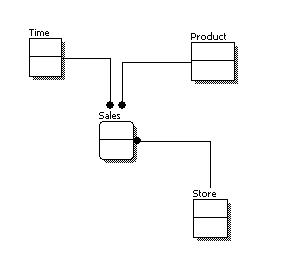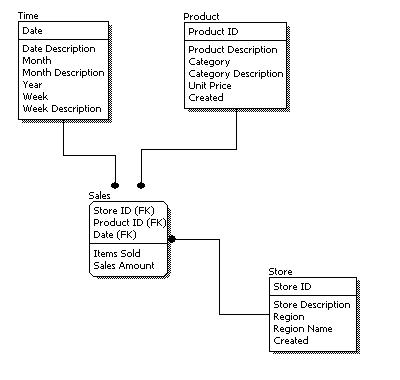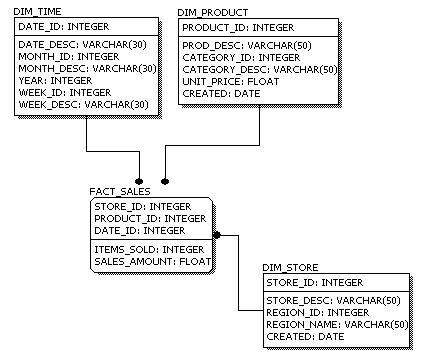USE [TEST]
GO
IF EXISTS (SELECT * FROM sys.foreign_keys WHERE object_id = OBJECT_ID(N'[dbo].[FK_ManagerEmployee_EmployeeID]') AND parent_object_id = OBJECT_ID(N'[dbo].[Employee]'))
ALTER TABLE [dbo].[Employee] DROP CONSTRAINT [FK_ManagerEmployee_EmployeeID]
GO
USE [TEST]
GO
IF EXISTS (SELECT * FROM sys.objects WHERE object_id = OBJECT_ID(N'[dbo].[Employee]') AND type in (N'U'))
DROP TABLE [dbo].[Employee]
GO
USE [TEST]
GO
SET ANSI_NULLS ON
GO
SET QUOTED_IDENTIFIER ON
GO
SET ANSI_PADDING ON
GO
CREATE TABLE [dbo].[Employee](
[EmployeeID] [int] NOT NULL,
[ManagerEmployeeID] [int] NULL,
[EmpoyeeName] [varchar](50) NOT NULL,
[Percentage] decimal(6,4) NOT NULL
CONSTRAINT [PK_Employee_EmployeeID] PRIMARY KEY CLUSTERED
(
[EmployeeID] ASC
)WITH (PAD_INDEX = OFF, STATISTICS_NORECOMPUTE = OFF, IGNORE_DUP_KEY = OFF, ALLOW_ROW_LOCKS = ON, ALLOW_PAGE_LOCKS = ON) ON [PRIMARY]
) ON [PRIMARY]
GO
SET ANSI_PADDING OFF
GO
ALTER TABLE [dbo].[Employee] WITH CHECK ADD CONSTRAINT [FK_ManagerEmployee_EmployeeID] FOREIGN KEY([ManagerEmployeeID])
REFERENCES [dbo].[Employee] ([EmployeeID])
GO
ALTER TABLE [dbo].[Employee] CHECK CONSTRAINT [FK_ManagerEmployee_EmployeeID]
GO
set nocount on
INSERT [dbo].[Employee] ([EmployeeID], [ManagerEmployeeID], [EmpoyeeName], [Percentage]) VALUES (1, NULL, N'CEO/Owner', 1.00)
INSERT [dbo].[Employee] ([EmployeeID], [ManagerEmployeeID], [EmpoyeeName], [Percentage]) VALUES (2, 1, N'Director 001', 0.3)
INSERT [dbo].[Employee] ([EmployeeID], [ManagerEmployeeID], [EmpoyeeName], [Percentage]) VALUES (3, 1, N'Director 002', 0.7)
INSERT [dbo].[Employee] ([EmployeeID], [ManagerEmployeeID], [EmpoyeeName], [Percentage]) VALUES (4, 2, N'Manager 001: Report to Director 001', 0.4)
INSERT [dbo].[Employee] ([EmployeeID], [ManagerEmployeeID], [EmpoyeeName], [Percentage]) VALUES (5, 2, N'Manager 002: Report to Director 001', 0.6)
INSERT [dbo].[Employee] ([EmployeeID], [ManagerEmployeeID], [EmpoyeeName], [Percentage]) VALUES (6, 3, N'Manager 003: Report to Director 002', 0.1)
INSERT [dbo].[Employee] ([EmployeeID], [ManagerEmployeeID], [EmpoyeeName], [Percentage]) VALUES (7, 3, N'Manager 004: Report to Director 002', 0.9)
INSERT [dbo].[Employee] ([EmployeeID], [ManagerEmployeeID], [EmpoyeeName], [Percentage]) VALUES (8, 4, N'Employee 001: Report to Manager 001',1)
INSERT [dbo].[Employee] ([EmployeeID], [ManagerEmployeeID], [EmpoyeeName], [Percentage]) VALUES (9, 5, N'Employee 002: Report to Manager 002',1)
INSERT [dbo].[Employee] ([EmployeeID], [ManagerEmployeeID], [EmpoyeeName], [Percentage]) VALUES (10, 6, N'Employee 003: Report to Manager 003',1)
INSERT [dbo].[Employee] ([EmployeeID], [ManagerEmployeeID], [EmpoyeeName], [Percentage]) VALUES (11, 7, N'Employee 004: Report to Manager 004',0.75)
INSERT [dbo].[Employee] ([EmployeeID], [ManagerEmployeeID], [EmpoyeeName], [Percentage]) VALUES (12, 7, N'Employee 005: Report to Manager 004',0.25)
GO
SELECT [EmployeeID]
,[ManagerEmployeeID]
,[EmpoyeeName]
,[Percentage]
FROM [dbo].[Employee]
ORDER BY 2,1
GO
with EmployeeHierarchy
([EmployeeID]
,[EmplyeeRank]
,[ManagerEmployeeID]
,[EmpoyeeName]
,[Percentage]
)
as
(
SELECT [EmployeeID]
,1 As [EmplyeeRank]
,[ManagerEmployeeID]
,[EmpoyeeName]
,ISNULL([Percentage], 1)
FROM [TEST].[dbo].[Employee]
WHERE [ManagerEmployeeID] IS NULL
UNION ALL
SELECT E.[EmployeeID]
,1+EH.EmplyeeRank As [EmplyeeRank]
,E.[ManagerEmployeeID]
,E.[EmpoyeeName]
,CAST(ISNULL(E.[Percentage], 1)*EH.[Percentage] AS DECIMAL(6,4))
FROM EmployeeHierarchy EH INNER JOIN [TEST].[dbo].[Employee] E
ON EH.EmployeeID=E.ManagerEmployeeID
)
SELECT
[EmployeeID]
,[EmplyeeRank]
,[ManagerEmployeeID]
,[Percentage]
,[EmpoyeeName]
FROM EmployeeHierarchy
--WHERE [EmplyeeRank]=4
order by 2,3,1;
GO
Sunday, 20 May 2012
Friday, 18 May 2012
Enable SQL Server 2008 Dedicated Administrator Connection
Problem
One of the junior SQL Server Database Administrators in my company approached me yesterday with a dilemma. He want to know how to enabled the Dedicated Administrator Connection in SQL Server 2008. At first I started to tell him, but figured it would be smarter to document the options and share the information. This tips shows you how you can enable this feature in SQL 2008.Solution
In SQL Server 2005, Microsoft introduced a new feature called Dedicated Administrator Connection (DAC). Using this feature a SQL Server Database Administrator can connect to a SQL Server Instance when the database engine is not responding to regular connections. During such a scenario a DBA can connect to the SQL Server Instance to troubleshoot and to kill any of the SQL Server Processes which are causing the issues.The DAC allows database administrators to connect to a SQL Server Instance and to execute T-SQL commands to troubleshoot and fix issues rather than rebooting the SQL Server which could lead to database corruption or other problems. By default, the remote Dedicated Administrator Connection feature is disabled in SQL Server 2005 and later versions. It’s a good practice to enable the DAC feature once the SQL Server 2005 or SQL Server 2008 is installed on every instance as this will help you troubleshoot issues when regular connections are not responding. However, only one dedicated administrator connection is allowed at a time on SQL Server 2005 and later versions.
Enable Dedicated Administrator Connection in SQL Server 2008 Using TSQL
Execute the below T-SQL to enable remote clients to utilize the Dedicated Administrator Connection.
Use master GO /* 0 = Allow Local Connection, 1 = Allow Remote Connections*/ sp_configure 'remote admin connections', 1 GO RECONFIGURE GO |
Enable Dedicated Administrator Connection in SQL Server 2008 Using SQL Server 2008 Management Studio
Database Administrators can also enable Dedicated Administrator Connection Feature using SQL Server 2008 Management Studio. This can be done by right clicking the SQL Server Instance and selecting the Facets option from the drop down list as shown in the snippet below.


You can also enable other database engine features like AsHocRemoteQueriesEnabled, ClrIntegrationEnabled, DatabaseMailEnabled, OleAutomationEnabled, ServiceBrokerEndpointActive, SoapEndpointsEnabled, SQLMailEnabled, WebAssistanceEnabled, XPCmdShellEnabled etc when required using the Surface Server Configuration Facet which is available in SQL Server 2008 Management Studio.
Once the Dedicated Administrator Connection is enabled you can connect to SQL Server 2008 using either SQL Server Management Studio or using SQLCMD.
Using DAC with SQLCMD
You need to be a member of the sysadmin fixed server role in order to use this feature. The “-A” switch is used to specify that the user is trying to connect to SQL Server using the Dedicated Administrator Connection.
The syntax to use DAC is mentioned below.
SQLCMD –S [SQL Server Name] –U [User Name] –P [Password] –A |
Using DAC with SQL Server Management Studio
You need to specify “ADMIN:” before the SQL Server Instance name when trying to connect to an SQL Server Instance to using DAC feature as shown in the snippet below.

-- Locking Information SELECT * FROM sys.dm_tran_locks GO -- Cache Status SELECT * FROM sys.dm_os_memory_cache_counters GO -- Active Sessions SELECT * FROM sys.dm_exec_sessions GO -- Requests Status SELECT * FROM sys.dm_exec_requests GO |

Next Steps
- Make sure you have enabled Dedicated Administrator Connection Feature on all the SQL Server 2005 and on SQL Server 2008 servers.
- If at any point database engine is not allowing regular connections, then use this feature to troubleshoot issues without shutting down SQL Server.
- DAC for SQL Server 2005
Last Update: 7/24/2009
| Share: | Share |  |
 |
Free SQL Server Learning
|
Comments and Feedback:
| Tuesday, January 11, 2011 - 11:54:19 AM - Jeremy Kadlec | Read The Tip |
|
Ashish, Great tip. I have one comment for SQL Server 2008 R2. In order to start the DAC in SSMS, I believe you need to navigate to File | New | Database Engine Query, then specify 'ADMIN:' prior to the server name. I believe as long as you have sa rights you can connect to the DAC either with a SQL Server standard login or Windows Authentication. I do not think you can use the 'Connect' option from Object Explorer in order to start a DAC session. Finally, I think you will know if the DAC connection has been established when you look at the bottom status bar in SSMS and see 'ADMIN:SQLServerName'. I hope this helps. Thank you, Jeremy Kadlec |
|
| Friday, August 26, 2011 - 8:21:32 AM - Leo Smulders | Read The Tip |
|
Hi, I Observe that 'remote admin connections' is not an advanced option. So setting 'show advanced options' to 1 is not necessary, neither to show, nor to change 'remote admin connections'. Leo Smulders Lucy Software B.V. |
|
| Friday, August 26, 2011 - 8:54:33 AM - Jeremy Kadlec | Read The Tip |
|
Leo, Thank you for the post. We will update the tip. I see the same behavior in SQL Server 2008 R2. Thank you, Jeremy Kadlec | |
http://www.mssqltips.com/sqlservertip/1801/enable-sql-server-2008-dedicated-administrator-connection/
Here are some common sql server default ports used:
By default, the DAC only listens on the loop-back IP address (127.0.0.1), port 1434. If TCP port 1434 is not available, a TCP port is dynamically assigned when the Database Engine starts up. When more than one instance of SQL Server is installed on a computer, check the error log for the TCP port number.
P.S.
1) check this dmv for more informations
select * from sys.dm_exec_connections
2)
sqlcmd –S127.0.0.1,1434
3) enable DAC:
use master
go
sp_configure 'remote admin connections', 1
go
RECONFIGURE;
go
4)
sqlcmd -S127.0.0.1 -E -A
-A means dedicated administration connection
-S should not contain port, why?
5)
you can shoutdown server from sqlcmd, just like Sybase
shutdown
go
6)
isql is the baby from Sybase ASE
osql is newer than isql
sqlcmd is newer than osql
powershell is newer than sqlcmd
Reference:
1) http://joshrobi.blogspot.ca/2008/02/sql-server-default-ports.html
2) http://sqlbuzz.wordpress.com/2011/08/09/sql-server-default-ports/
| SQL Component | Port (TCP -default or UDP ) |
| SQL Service | 1433 |
| SQL Server DAC (Dedicated Admin Connection) | 1434 |
| SQL Browser Service | 1434(UDP) |
| SQL Monitoring | 1444 |
| SQL Server Analysis Services Redirector | 2382 |
| SQL Server Analysis Service | 2383 |
| SQL Server Reporting Services | 80 |
| SQL Database Mirroring | 5022 |
By default, the DAC only listens on the loop-back IP address (127.0.0.1), port 1434. If TCP port 1434 is not available, a TCP port is dynamically assigned when the Database Engine starts up. When more than one instance of SQL Server is installed on a computer, check the error log for the TCP port number.
P.S.
1) check this dmv for more informations
select * from sys.dm_exec_connections
2)
sqlcmd –S127.0.0.1,1434
3) enable DAC:
use master
go
sp_configure 'remote admin connections', 1
go
RECONFIGURE;
go
4)
sqlcmd -S127.0.0.1 -E -A
-A means dedicated administration connection
-S should not contain port, why?
5)
you can shoutdown server from sqlcmd, just like Sybase
shutdown
go
6)
isql is the baby from Sybase ASE
osql is newer than isql
sqlcmd is newer than osql
powershell is newer than sqlcmd
Reference:
1) http://joshrobi.blogspot.ca/2008/02/sql-server-default-ports.html
2) http://sqlbuzz.wordpress.com/2011/08/09/sql-server-default-ports/
Sunday, 13 May 2012
Conceptual, Logical and Physical Data Model
Here we compare these three types of data models. The table below compares the different features:
Below we show the conceptual, logical, and physical versions of a single data model.
We can see that the complexity increases from conceptual to logical
to physical. This is why we always first start with the conceptual data
model (so we understand at high level what are the different entities
in our data and how they relate to one another), then move on to the
logical data model (so we understand the details of our data without
worrying about how they will actually implemented), and finally the
physical data model (so we know exactly how to implement our data model
in the database of choice). In a data warehousing project, sometimes
the conceptual data model and the logical data model are considered as a
single deliverable.
Reference:
http://www.1keydata.com/datawarehousing/data-modeling-levels.html
http://www.aisintl.com/case/CDM-PDM.html
| Feature | Conceptual | Logical | Physical |
| Entity Names | |||
| Entity Relationships | |||
| Attributes | |||
| Primary Keys | |||
| Foreign Keys | |||
| Table Names | |||
| Column Names | |||
| Column Data Types |

|

|

|
| The terms "conceptual". "logical", and "physical" are frequently used in data modeling to differentiate levels of abstraction versus detail in the model. Although there is no general agreement, let alone accepted authority, which defines these terms, nevertheless data modelers generally understand the approximate scope of each. | |
|
A conceptual entity-relationship model shows
how the business world sees information. It suppresses
non-critical details in order to emphasize business rules
and user objects. It typically includes only significant entities
which have business meaning, along with their relationships.
Many-to-many relationships are acceptable to
represent entity associations. A conceptual model
might discover that there is a need to house information
about each person in an organization. While considerable
thought is given to discovering and describing the
relevant properties of each person, the designers accept
implicitly that each person is distinct and unique. A conceptual model may include a few significant attributes to augment the definition and visualization of entities. No effort need be made to inventory the full attribute population of such a model. A conceptual model may have some identifying concepts or candidate keys noted but it explicitly does not include a complete scheme of identity, since identifiers are logical choices made from a deeper context. |
|
A logical entity-relationship
model is provable in the mathematics of data science.
Given the current predominance of relational databases,
logical models generally conform to relational theory.
Thus a logical model contains only fully normalized
entities. Some of these may represent logical domains
rather than potential physical tables. For a logical
data model to be normalized, it must include the full
population of attributes to be implemented and those
attributes must be defined in terms of their domains or logical
data types (e.g., character, number, date, picture,
etc.). A logical data model requires a complete scheme of identifiers or candidate keys for unique identification of each occurrence in every entity. Since there are choices of identifiers for many entities, the logical model indicates the current selection of identity. Propagation of identifiers as foreign keys may be explicit or implied. Since relational storage cannot support many-to-many concepts, a logical data model resolves all many-to-many relationships into associative entities which may acquire independent identifiers and possibly other attributes as well. |
|
A physical data model is a single logical model instantiated in a specific database management product (e.g., Sybase, Oracle, Informix, etc.) in a specific installation. The physical data model specifies implementation details which may be features of a particular product or version, as well as configuration choices for that database instance. These include index construction, alternate key declarations, modes of referential integrity (declarative or procedural), constraints, views, and physical storage objects such as tablespaces. |
|
The conceptual model is concerned
with the real world view and understanding of data; the logical
model is a generalized formal structure in the rules
of information science; the physical model
specifies how this will be executed in a particular DBMS
instance. Various data modeling methodologies and
products provide these layers of abstraction in different
ways. Some address only the physical implementation; some
model only the logical structure; others may provide
elements of all three but not necessarily in three
separate views. In each case it helps the data modeler to
understand the level of abstraction to which a particular
feature or task belongs. |
http://www.1keydata.com/datawarehousing/data-modeling-levels.html
http://www.aisintl.com/case/CDM-PDM.html
Subscribe to:
Comments (Atom)